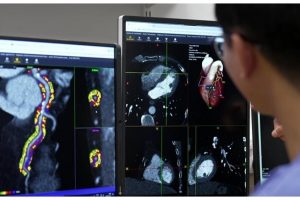Today, at the HIMSS Annual Conference and Exhibition in Chicago, HIMSS released the results of the 2015 HIMSS Mobile Technology Survey. This year’s study, of more than 200 healthcare provider employees. Many respondents revealed that healthcare organizations are widely beginning to deploy mobile health technologies with the aim of engaging patients within their organizations. Many respondents also emphasized a need to fully optimize and leverage the wide capabilities that mobile technologies and platforms offered.
Here are 15 key findings from the survey:
1. 90 percent of respondents are utilizing mobile devices within their organizations to engage patients in their healthcare
2. More than 70 Percent of provider employee participants utilize app-enabled portals to engage patients and cut costs
3. When asked about which mobile tools they leverage, the respondents reported a variety of mobile tools including: app-enabled patient portals (73 percent), telehealth services (62 percent) and text communications (57 percent).
4. 36 percent of respondents believe the use of app-enabled patient portals is the most effective tool in patient engagement to date.
5. More than half of respondents (51 percent) reported that their organization was able to leverage technology to coordinate or impact patient care in at least one of the areas provided in the study.
6. The greatest areas of impact emanate from telehealth interventions, including the use of remote ICUs, teleradiology services, and the ability to coordinate care across the care continuum, which includes the use of remote patient monitoring tools.
7. Mobile Implementation: 47 percent of respondents indicated that implementation of mobile services for access to information is a high priority at their organization. However, only 18 percent indicated their mobile technology environment was highly mature.
8. Mobile Technology Policy: 57 percent of respondents indicated their organization has a mobile technology policy; another third reported that their organization will develop one in the future. Mobile device security was indicated as a key component of current and future mobile technology policies.
9. Federal Policy’s Influence: More than half of respondents indicated that the Meaningful Use Program has a strong impact on their organization’s mHealth strategy.
App Development
10. Approximately one-third (31 percent) of respondents indicated their organization currently offers organizational-specific apps for patients.
11. 30 percent reported their organization is presently developing an organization-specific app.
12. Ten percent of respondents have created an app marketplace to distribute apps internally or externally.
Integration of Data into the EHR:
13. Two thirds (67 percent) of respondents reported that at least some portion of the information on a mobile device is uploaded into the organization’s electronic health record (EHR).
14. Only eight percent of respondents reported that their organization captures all data generated by mobile devices into their EHR.
14. Sending Alerts to Providers/Care Teams: One-third of respondents indicated that that their organization has created interfaces between the EHR and other devices such that alerts are posted directly into the EHR.
15. Barriers to Mobile Technology: Lack of funding continues to be a top barrier to the effective use of mobile technology. This was identified by 51 percent of respondents.
































